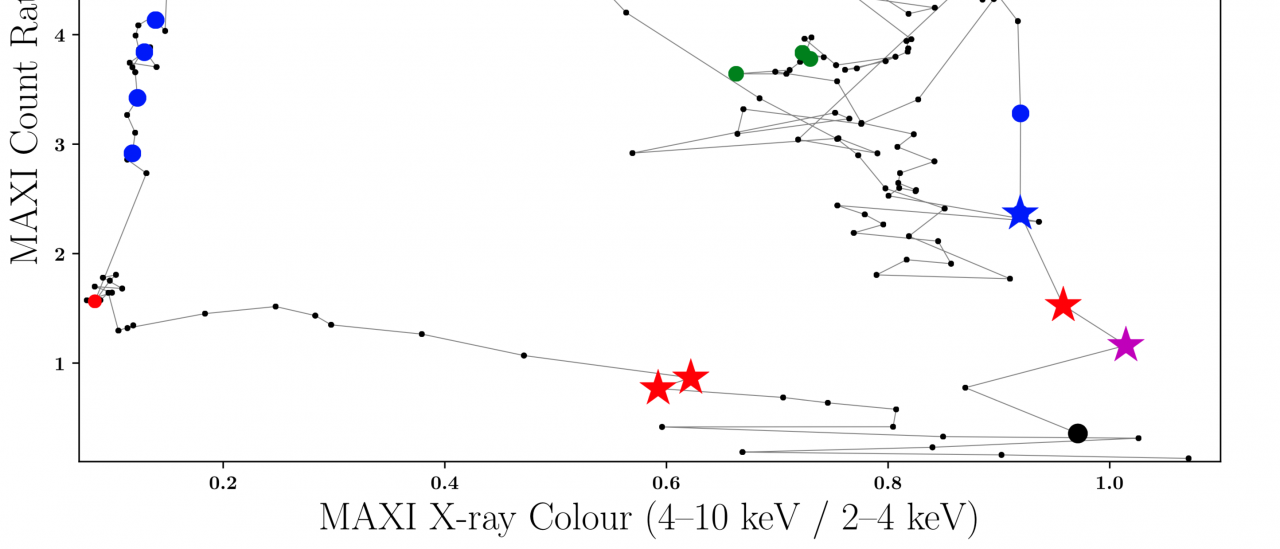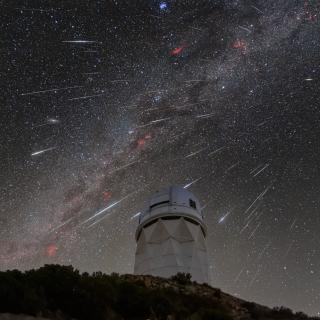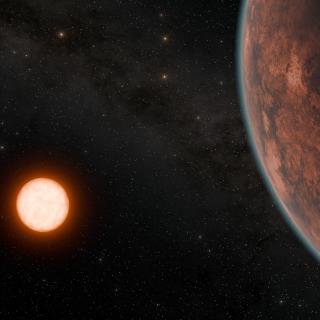Accretion disc winds are observed in accreting black holes across the full range of masses. In stellar-mass black holes, X-ray winds have been recently established as a fundamental property of their most radiatively efficient phases, the so-called soft states, impacting on the entire accretion process. However, these hot and powerful winds are scarcely observed during the dimmer hard states, where most of the black holes of the Universe exist and kinetic feedback from jets dominates. The disappearance of the wind is a matter of strong debate and has been suggested to be related to different physical processes, such as the details of the wind launching mechanism, instabilities or over-ionization of the ejecta. Cold disc winds, on the other hand, have been detected via optical observations in luminous and violent (non-standard) outbursts, and also have a dramatic impact on accretion. Here, we report on optical observations of the black hole transient MAXI J1820+070, whose nearby location and low interstellar absorption allowed for an unprecedentedly detailed spectroscopic follow-up. The observations covered the entire black hole outburst, where the source alternated between hard and soft states following the standard pattern. We discover clear wind features in the hard state, whilst these are not witnessed during the several months’ long soft state. We find that the kinetic properties of this cold wind are similar to those typically observed in the (soft-state) X-ray winds, but its visibility is determined by the ionization state of the outer accretion disc. This reshapes the current accretion/ejection paradigm, strongly suggesting that disc winds are not exclusive to the bright states, but a continuous mass and angular momentum loss mechanism that impacts on black hole accretion across a broad luminosity range.
Visibility of the cold wind as a function of the X-ray luminosity and colour. Hardness intensity diagram of MAXI J1820+070 using 1-day averaged X-ray fluxes from the MAXI instrument (black dots).
Advertised on
Authors
Teodoro
Muñoz Darias
F. Jiménez-Ibarra
G. Panizo-Espinar
Jorge
Casares Velázquez
D. Mata Sánchez
R. P. Fender
D. A. H. Buckley
P. Garnavich
Manuel Ángel
Pérez Torres
Montserrat
Armas Padilla
P. A. Charles
J. M. Corral-Santana
J. J. E. Kajava
E. J. Kotze
C. Littlefield
J. Sánchez-Sierras
D. Steeghs
J. Thomas
References



